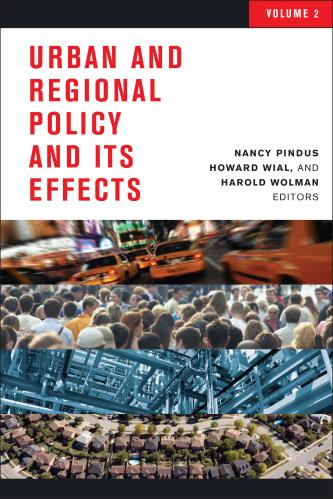The Bureau of Labor Statistics (BLS) employment report released today shows that 211,000 new jobs were added in April, after a disappointing report for March (now revised to show a 79,000 increase). In this blog post, I will put forward two alternative projections for job growth in March 2017, each of which was calculated using methodology outlined in my past research. The first estimate, which uses an alternative adjustment for seasonal patterns, is 201,000 new jobs for April; the second estimate, which adjusts for the effects of abnormal weather, is 184,000 new jobs for April. These alternative estimates confirm that job growth rebounded in April.
Calculating the Alternative Seasonal Adjustment
Monthly job gains and losses can indicate how the economy is doing once they are corrected to account for the pattern the BLS already expects in a process called seasonal adjustment. The approach for this seasonal adjustment that is presently used by the BLS puts very heavy weight on the current and last two years of data in assessing what are the typical patterns for each month.
In my 2013 paper “Unseasonal Seasonals?” I argue that a longer window should be used to estimate seasonal effects. I find that using a different seasonal filter, known as the 3×9 filter, produces better results and more accurate forecasts by emphasizing more years of data. The 3×9 filter spreads weight over the most recent six years in estimating seasonal patterns, which makes them more stable over time than the current BLS seasonal adjustment method.
To produce the Alternative Seasonal Adjustment, I calculate the month-over-month change in total nonfarm payrolls, seasonally adjusted by the 3×9 filter, for the most recent month, which you can see in table below. The corresponding data as published by the BLS are shown for comparison purposes. According to the Alternative Seasonal Adjustment, the economy added 201,000 jobs in April, 10,000 less than the official BLS total of 211,000, but strong nonetheless.
Calculating the seasonal and weather adjustment
In addition to seasonal effects, abnormal weather can also affect month-to-month fluctuations in job growth. In my 2015 paper “Weather-Adjusting Economic Data,” Michael Boldin and I implement a statistical methodology for adjusting employment data for the effects of deviations in weather from seasonal norms. This is distinct from seasonal adjustment, which only controls for the normal variation in weather across the year. We use several indicators of weather, including temperature and snowfall.
Growth in construction employment, one of the more sensitive sectors to weather, was relatively flat in April, following similar flatness in March.
Temperatures in April were warmer than usual, which had a role in boosting employment. Growth in construction employment, one of the more sensitive sectors to weather, was relatively flat in April, following similar flatness in March. However, the employment growth in the leisure and hospitality sector was much higher in April than in March. Removing the effect of weather yields a lower Seasonal and Weather Adjustment estimate of 184,000 new jobs.
Both the Alternative Seasonal Adjustment and the Seasonal and Weather Adjustment show strong job gains for April. Over the last 6 months, employment growth has been very stable according to the Seasonal and Weather Adjustment, averaging about 173,000 jobs added per month.
| Thousands of jobs added | BLS Official | Alternative Seasonal Adjustment[1] | Seasonal and Weather Adjustment[2] | Weather Effect[3] |
|---|---|---|---|---|
| 2017-April | 211 | 201 | 184 | +27 |
| 2017-March | 79 | 57 | 132 | -53 |
| 2017-February | 232 | 250 | 203 | +29 |
| 2017-January | 216 | 200 | 189 | +27 |
| 2016-December | 155 | 157 | 161 | -6 |
| 2016-November | 164 | 178 | 168 | -4 |
| 2016-October | 124 | 130 | 123 | +1 |
| 2016-September | 249 | 240 | 262 | -13 |
| 2016-August | 176 | 169 | 163 | +13 |
| 2016-July | 291 | 311 | 293 | -2 |
| 2016-June | 297 | 291 | 276 | +21 |
| 2016-May | 43 | 45 | 39 | +4 |
| 2016-April | 153 | 144 | 245 | -92 |
Note: Changes in previous months’ numbers reflect revisions to the underlying data.
[1] Applies a longer window estimate of seasonal effects (see Wright 2013).
[2] Includes seasonal and weather adjustments, where seasonal adjustments are estimated using the BLS window specifications (see Boldin & Wright 2015).
[3] BLS Official number less the Seasonal and Weather Adjustment number.
The author did not receive financial support from any firm or person for this article or from any firm or person with a financial or political interest in this article. He is currently not an officer, director, or board member of any organization with an interest in this article.









Commentary
Job growth rebounds in April, thanks in part to warmer temperatures
May 5, 2017